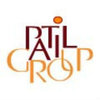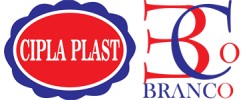Filter interviews by
Western Rubber Production Engineer Interview Questions and Answers
Western Rubber Production Engineer Interview Experiences
1 interview found

Basic test normal question
(1 Question)
- Q1. What are you aspecting
- Ans.
I am expecting to utilize my technical skills and knowledge to contribute to the production process and improve efficiency.
Expecting to work on optimizing production processes
Looking forward to collaborating with cross-functional teams
Hoping to implement new technologies to improve production efficiency
Top trending discussions






Interview questions from similar companies

I appeared for an interview before Apr 2024, where I was asked the following questions.
- Q1. What is oee?
- Ans.
OEE (Overall Equipment Effectiveness) measures manufacturing productivity by evaluating availability, performance, and quality.
OEE = Availability x Performance x Quality.
Availability considers downtime; for example, if a machine is down for maintenance.
Performance measures the speed of production; for instance, if a machine produces 80 units/hour instead of 100.
Quality assesses the number of good units produced versus ...
- Q2. What is smt?
- Ans.
SMT (Surface Mount Technology) is a method for producing electronic circuits by mounting components directly onto the surface of PCBs.
SMT allows for higher component density on PCBs, enabling smaller devices.
Common SMT components include resistors, capacitors, and integrated circuits.
SMT is widely used in consumer electronics, such as smartphones and laptops.
The process involves solder paste application, component plac...

(2 Questions)
- Q1. Tell me about yourself
- Ans.
I am a dedicated and experienced Production Engineer with a strong background in manufacturing processes and quality control.
Bachelor's degree in Mechanical Engineering
5+ years of experience in production engineering
Proficient in CAD software and manufacturing processes
Led a team to improve production efficiency by 20% at my previous job
- Q2. About work flow
Interview Preparation Tips

I appeared for an interview before Feb 2024.
(10 Questions)
- Q1. What are the seven quality control tools, and can you provide explanations for each?
- Ans.
The seven quality control tools are essential for process improvement and problem-solving in engineering.
Check sheet: Used to collect and analyze data in a systematic way, such as tracking defects in a manufacturing process.
Pareto chart: Helps identify the most significant factors contributing to a problem by displaying them in descending order of frequency or impact.
Cause-and-effect diagram (Fishbone diagram): Visuali...
- Q2. 5S and visual management
- Q3. What are the seven steps of autonomous maintenance?
- Ans.
Autonomous maintenance is a key pillar of Total Productive Maintenance (TPM) and involves seven steps to empower operators to take care of their equipment.
Step 1: Initial Cleaning - Operators clean the equipment and surrounding area to identify abnormalities.
Step 2: Eliminate Sources of Contamination - Remove dirt, dust, and debris that can lead to breakdowns.
Step 3: General Inspection - Operators visually inspect the ...
- Q4. What are the calculations involved in Overall Equipment Effectiveness (OEE)?
- Ans.
OEE calculations involve Availability, Performance, and Quality factors to measure equipment efficiency.
Calculate Availability by dividing Operating Time by Planned Production Time.
Calculate Performance by dividing Actual Production by Maximum Possible Production.
Calculate Quality by dividing Good Units Produced by Total Units Started.
- Q5. Why is it mandatory for an organization to implement lean practices?
- Ans.
Implementing lean practices is mandatory for organizations to improve efficiency, reduce waste, and increase productivity.
Lean practices help organizations identify and eliminate waste in processes, leading to cost savings and improved efficiency.
By implementing lean practices, organizations can improve quality control and reduce defects in products or services.
Lean practices promote continuous improvement and empower ...
- Q6. How can downstream team members be motivated?
- Ans.
Downstream team members can be motivated through recognition, clear communication, opportunities for growth, and fostering a positive work environment.
Provide recognition for their hard work and achievements
Communicate clearly about goals, expectations, and feedback
Offer opportunities for growth and development, such as training or mentorship programs
Create a positive work environment through team-building activities a...
- Q7. What is Pareto analysis and how is it applied in decision-making processes?
- Ans.
Pareto analysis is a technique used to identify the most important factors contributing to a problem or situation.
Pareto analysis is based on the Pareto Principle, also known as the 80/20 rule, which states that roughly 80% of effects come from 20% of causes.
It involves identifying and prioritizing the factors that have the most significant impact on a particular outcome.
By focusing on addressing the most critical fact...
- Q8. What is a Gemba walk, and how is it performed?
- Ans.
A Gemba walk is a Lean management technique where managers go to the actual workplace to observe operations and engage with employees.
Gemba walks involve observing processes, asking questions, and identifying opportunities for improvement.
Managers should focus on understanding the work being done and the challenges faced by employees.
Gemba walks help in building relationships with employees and fostering a culture of c...
- Q9. What are the steps involved in performing safety risk assessments?
- Ans.
Steps involved in performing safety risk assessments
Identify hazards and potential risks
Assess the likelihood and severity of each risk
Implement control measures to mitigate risks
Monitor and review the effectiveness of control measures
Document findings and recommendations
Communicate risks to relevant stakeholders
- Q10. Explain about TPM
- Ans.
TPM stands for Total Productive Maintenance, a proactive approach to maintenance that aims to maximize equipment effectiveness.
TPM focuses on preventing equipment breakdowns through regular maintenance and employee involvement.
It involves autonomous maintenance, planned maintenance, and focused improvement activities.
TPM aims to improve overall equipment effectiveness (OEE) by reducing downtime, improving quality, and ...

I applied via Company Website and was interviewed before Jun 2020. There were 5 interview rounds.
Interview Questionnaire
9 Questions
- Q1. PH calibration
- Q2. Batch manufacturing process
- Ans.
Batch manufacturing process involves producing a specific quantity of a product in a single production run.
Batch manufacturing is used for products that have a limited demand or are seasonal.
It involves dividing the production process into batches, each with a specific quantity.
Each batch is tested and inspected before moving on to the next stage.
Examples include pharmaceuticals, food products, and cosmetics.
Batch manu...
- Q3. Vessel cleaning process
- Q4. About cip and sip
- Q5. Dispensing
- Q6. Sifting or excipients and api
- Q7. Cleaning
- Q8. E track , sap, sap jam , word , excel
- Q9. Cip dox
Interview Preparation Tips

I applied via Referral and was interviewed before Oct 2023. There was 1 interview round.
(2 Questions)
- Q1. What is Bar bending schudel
- Ans.
Bar bending schedule is a document that provides details of reinforcement bars to be used in construction projects.
Bar bending schedule includes information on bar sizes, shapes, quantities, and placement in the structure.
It helps in estimating the quantity of steel required for construction and ensures proper reinforcement of concrete structures.
Bar bending schedules are typically prepared by structural engineers or d...
- Q2. Ask about cement register form

I applied via Recruitment Consulltant and was interviewed before Nov 2021. There were 2 interview rounds.

(4 Questions)
- Q1. Discribe about your self.
- Ans.
I am a dedicated and experienced Production Officer with a strong background in managing production processes and ensuring efficiency.
Experienced in overseeing production operations and implementing strategies to improve productivity.
Skilled in coordinating with cross-functional teams to meet production targets and deadlines.
Proficient in analyzing production data and identifying areas for improvement.
Knowledgeable in ...
- Q2. What is the productivity.
- Ans.
Productivity is a measure of the efficiency and output of a production process or individual.
Productivity is the ratio of output to input.
It measures how efficiently resources are used to produce goods or services.
Higher productivity indicates higher output with the same or fewer resources.
Productivity can be measured at various levels - individual, team, department, or organization.
Examples of productivity measures in...
- Q3. Which type of machine use for grinding.
- Ans.
Grinding machines are used for various purposes in production, such as surface grinding, cylindrical grinding, and tool and cutter grinding.
Surface grinding machines are used to produce a smooth finish on flat surfaces.
Cylindrical grinding machines are used to grind the outer surface of cylindrical workpieces.
Tool and cutter grinding machines are used to sharpen and reshape cutting tools.
Other types of grinding machine...
- Q4. Which grinding media use
- Ans.
Grinding media commonly used in production include steel balls, ceramic beads, and cylpebs.
Steel balls are widely used in grinding operations due to their high hardness and impact resistance.
Ceramic beads are often used for fine grinding and dispersing applications.
Cylpebs, which are cylindrical in shape, are used in certain grinding processes for specific applications.
Other types of grinding media may also be used dep...
Interview Preparation Tips

Production Manager Interview Questions & Answers
Cipla Industriesposted on 7 May 2022
I applied via Approached by Company and was interviewed in Nov 2021. There were 3 interview rounds.
(1 Question)
- Q1. How you control data integrity issues in your department
- Ans.
Data integrity is ensured through regular audits, strict access controls, and robust backup systems.
Regular audits are conducted to identify and rectify any data integrity issues.
Strict access controls are implemented to prevent unauthorized modifications or deletions.
Robust backup systems are in place to ensure data can be restored in case of any integrity issues.
Data validation checks are performed during data entry ...
(1 Question)
- Q1. How Your perform QMS related work, i.e. OOS, OOT, Deviation and change controls, SOP, Operation of compression coating capsule filling and troubleshooting
- Ans.
I perform QMS related work by following established procedures and protocols, and troubleshooting equipment as needed.
I ensure that all OOS, OOT, deviation, and change control processes are properly documented and followed.
I maintain and update SOPs as needed to ensure compliance with regulations and industry standards.
I operate and troubleshoot equipment such as compression coating capsule filling machines to ensure o...
(1 Question)
- Q1. Team size you handle... do you handle ream size more than you experience and other
Interview Preparation Tips
Skills evaluated in this interview

I applied via Approached by Company and was interviewed in Apr 2023. There were 4 interview rounds.

(1 Question)
- Q1. TELL ME ABOUT YOURSELF & HOW YOU WILL BE AN ASSET FOR OUR ORGANIZATION
(1 Question)
- Q1. EXPLAIN WIRE DRAWING PROCESS PARAMETERS
- Ans.
Wire drawing process parameters involve factors like die angle, reduction ratio, lubrication, and speed.
Die angle affects the shape and size of the wire being drawn.
Reduction ratio determines the amount of diameter reduction in each pass.
Lubrication is crucial for reducing friction and heat during the process.
Speed influences the overall efficiency and quality of the drawn wire.
(2 Questions)
- Q1. HOW YOU WILL CONTROL COST
- Ans.
By implementing cost control measures, monitoring expenses, negotiating with suppliers, and optimizing production processes.
Implementing cost control measures such as setting budgets and tracking expenses
Monitoring expenses regularly to identify areas of overspending
Negotiating with suppliers to get the best prices for materials and services
Optimizing production processes to reduce waste and improve efficiency
- Q2. WHERE YOU SEE YOURSELF AFTER 5 YEARS.
Interview Preparation Tips
- 5s
- TPM
- Pareto Analysis

(2 Questions)
- Q1. A Water cement ratio
- Ans.
Water cement ratio is the ratio of the weight of water to the weight of cement used in a concrete mix.
Water cement ratio is a crucial factor in determining the strength and durability of concrete.
A lower water cement ratio results in stronger and more durable concrete.
Typical water cement ratios range from 0.4 to 0.6 for normal strength concrete.
For high strength concrete, water cement ratios can be as low as 0.25.
- Q2. Soil test compaction
Western Rubber Interview FAQs
Tell us how to improve this page.
Interview Questions for Popular Designations
- Senior Engineer Interview Questions
- Project Engineer Interview Questions
- Junior Engineer Interview Questions
- Production Manager Interview Questions
- Production Officer Interview Questions
- Graduate Engineer Interview Questions
- Executive Engineer Interview Questions
- Senior Production Engineer Interview Questions
- Show more
Overall Interview Experience Rating
based on 1 interview experience
Interview Questions from Similar Companies
Western Rubber Production Engineer Reviews and Ratings
based on 3 reviews
Rating in categories
|
Production Engineer
11
salaries
| ₹3 L/yr - ₹3.9 L/yr |
|
Business Development Executive
7
salaries
| ₹4.2 L/yr - ₹5.2 L/yr |
|
QC Executive
5
salaries
| ₹2.5 L/yr - ₹2.8 L/yr |
|
Compounding Engineer
4
salaries
| ₹3.6 L/yr - ₹4.2 L/yr |
|
Senior Quality Executive
4
salaries
| ₹4 L/yr - ₹5.2 L/yr |

Namaste India Foods

Bhagwati Products

Recipharm Pharmaservices

Patil Group
- Home >
- Interviews >
- Western Rubber Interview Questions











